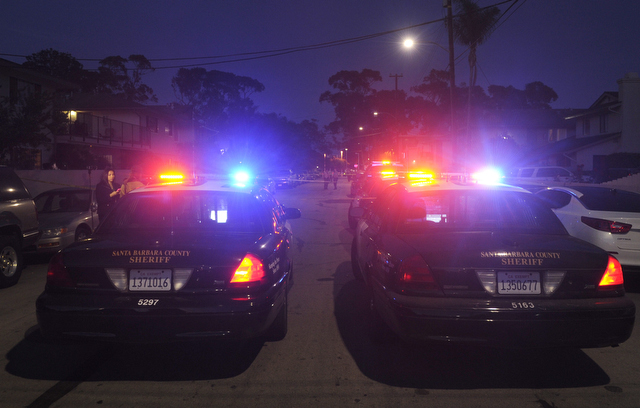Campus Cops Don’t Make Everyone Safer
Racial Bias Training Is Essential to Safeguard All Students

Last Tuesday I found myself in a meeting with fellow parents concerned about the misogynistic death threats posted online by a group of male students. The collective worry was not only for female students’ safety but also the belief that the district had failed to effectively communicate and respond to the incident. The main issue that brought me to the meeting was the proposed remedy for increasing student safety: placing an armed officer on the campus of San Marcos High School.
Reacting to the threat, most parents present supported an armed school resource officer (SRO) on campus; they were perhaps unaware of the research that shows campus police do not increase student safety. I was unsurprised to see that those parents were majority white or folks who could pass as white. It was also unsurprising that the only parents in the room against the idea were parents of color. Police violence, especially shootings, against people of color that make headlines and populate social media should make it unnecessary to explain why opinions about police and safety tend to be divided along color lines.
One officer spoke to the parents for several minutes to familiarize them with his job as an SRO. At the end, I raised my hand to ask: “Can you please describe your training in implicit bias?” He answered with details of his credentials, none of which included bias training. I clarified: “I’m interested in knowing about your training specifically around implicit bias.” His response: “I am unfamiliar with what that is.”
Santa Barbara Unified School District Superintendent Cary Matsuoka immediately rose from his seat and declared his support for implicit bias training. He detailed his own experience with the training, saying it had opened his eyes to the fact that we all have biases based on beliefs reinforced by our culture, including completely subconscious racial beliefs.
Matsuoka acknowledged the research that showed teachers have unrecognized biases against students of color that affect students’ performance and academic outcomes. He explained that teachers and administrators within the district are receiving the training.
I praised those efforts and specified that my concern was about the implicit biases of the adults on campus carrying guns. This concern stems from a large body of research utilizing “shoot or don’t shoot” simulations, which show that officers are significantly more likely to shoot a black male holding a wallet or a cell phone than a white male holding a gun.
The officer tried to ease parents’ fears about over-policing, but the problem of implicit racial bias is actually out of his hands. Biases are subconscious, and because we live in a white-dominated culture, even officers of color have them.
Even with bias training, it is difficult to see the impact of our own racial biases on our behavior. Children of color are disproportionately affected by this lack of awareness. Whether it’s the decision to shoot or not shoot, the decision to notice a transgression or let it slide, or the decision about punitive measures after an offense, people of color get the short end of the stick. Implicit bias creeps in when authorities evaluate and punish their behavior, a systemic problem often referred to as the school-to-prison pipeline. As these instances accumulate, the result is the accurate belief that in the presence of police, people of color are less safe than white people.
Knowing this and still placing untrained police officers with guns on school campuses would be another slap in the face to our students of color — a dangerous one.
I learned from the superintendent firsthand that he believes in the need for implicit bias training for adults in charge of our kids. Together we heard a campus officer tell an audience full of parents, including parents of color, that he had never even heard of the concept. This is a problem.
I am against placing armed officers at schools because there is no evidence that they increase campus safety and too much evidence of the potential for harm. Should they be assigned to a campus, however, it is essential that they first be required to engage in rigorous implicit bias training. They must be trained to understand and counterbalance subconscious biases that may cause their behavior to accidentally but detrimentally impact students of color.
Given the passion, dedication, and love I saw from all parents at that meeting, I doubt any would disagree with me on the urgency and reasonableness of this request, no matter the race of their children.
Carrie Hutchinson is a member of Showing Up for Racial Justice, Santa Barbara, which is circulating a petition against SROs at San Marcos High.



